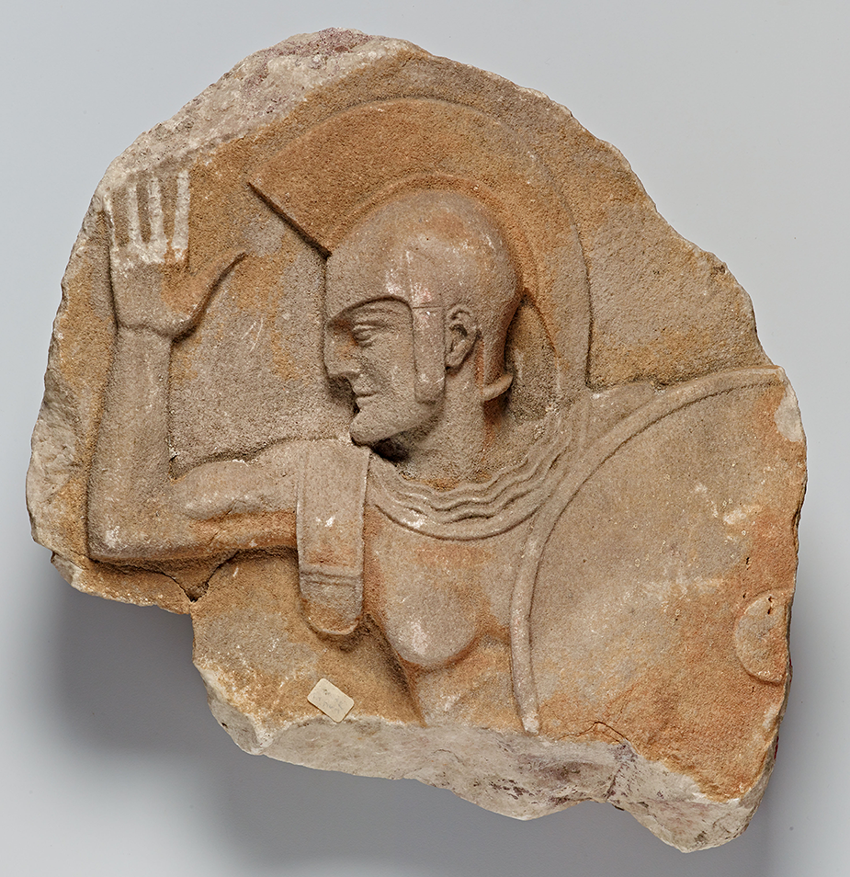Cantor Arts Center
328 Lomita Drive at Museum Way
Stanford, CA 94305-5060
Phone: 650-723-4177

Artist unknown (Greece), Relief of a Warrior, nd. Marble. Gift of Esther de Lemos Morton, Margaret de Lemos Lyon, and Marie J. Storm, 1962.26
The Cantor’s Relief of a Warrior is likely a fake. We see anachronisms and stereotypes including an exaggerated “Roman nose,” and an arm and hand that are too stiff to be stylistically accurate. On the breastplate, we expect to see the shoulder strap attach to the pectoral, but it surprises us by attaching under the armpit. Even the stone’s “aging” is questionable. Its bright, rust-colored hues diverge from the more muted patinas of authentic reliefs that have spent centuries in the earth.
At one time this piece was owned by Pedro Joseph de Lemos, director of the Stanford University Museum (now the Cantor) from 1917 to 1945. During his lifetime he kept the relief privately, but upon passing away in 1954, his descendants inherited it, and later donated it to the Cantor. This history echoes a humorous anecdote told by T. G. Wakeling, which illustrates how difficult it can be to discern human motives as artworks pass through many hands:
A story is told of an expert who wished to play off a joke upon a very old and valued friend. So he fashioned two scarabs . . . . The expert intended to send those he had made round to his old friend as a birthday present, and the two would have laughed and chuckled together over the joke. Finally he put them away in his desk to await the proper time to send them, and then other matters claimed his attention so that he forgot all about them. Some years later an illness came on, and he died. When his effects were disposed of, these scarabs were found and sold to a museum for £400. After a time they were discovered to be forgeries, and an action at law was brought in Europe. Despite the fact that the sellers pleaded ignorance and good faith, one was sentenced to imprisonment, not for fraud, but for the civil debt, owing to inability to refund the amount.